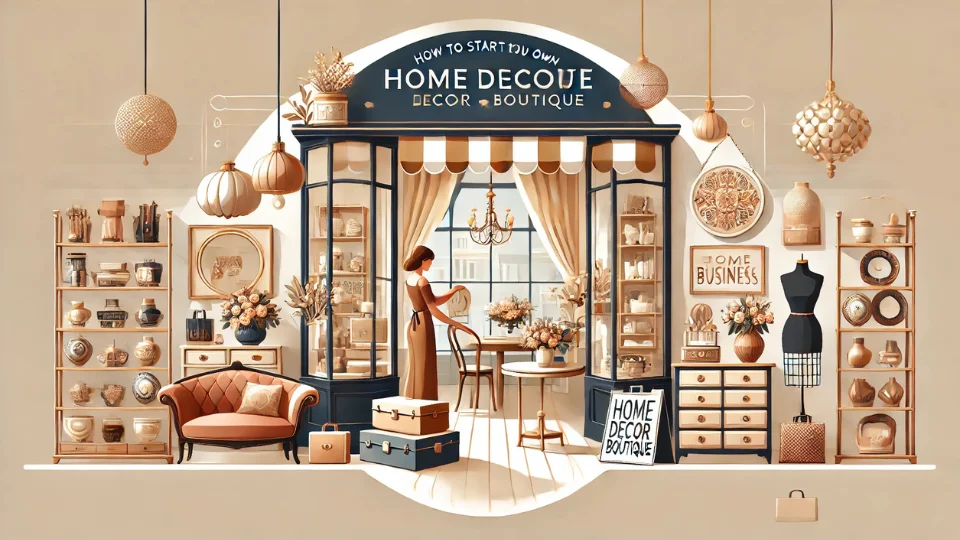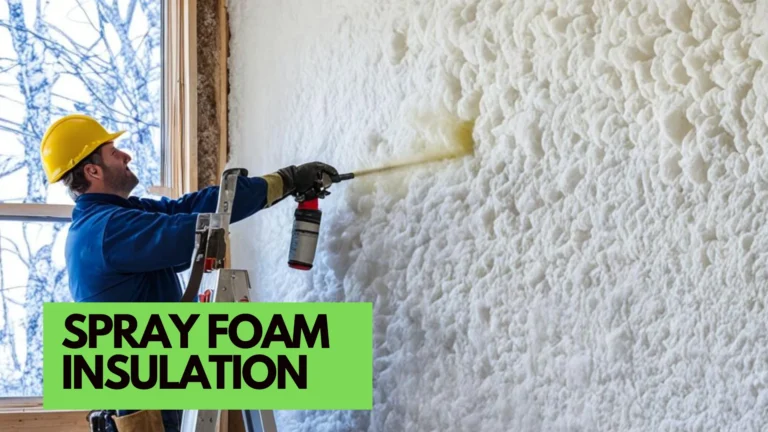How to Start Your Own Home Decor Boutique

Starting a home decor boutique can be an exciting and profitable venture. With a growing market for stylish interiors, there’s ample opportunity for success. However, it requires careful planning and execution. This guide covers everything you need to know.
Understanding the Home Decor Industry

Before diving in, research the industry. Home decor is a vast market with various styles, materials, and trends. Understanding consumer preferences and current trends will help you build a relevant and competitive business.
Market Research
Conduct market research to identify your target audience. Determine their buying habits, preferences, and budget. Visit competitors’ stores, check online platforms, and analyze customer reviews. This will help you understand what works and what doesn’t.
Finding Your Niche
Home decor includes furniture, lighting, textiles, artwork, and accessories. Decide whether you’ll specialize in a particular style, such as modern, rustic, or vintage. A well-defined niche helps you stand out in the crowded market.
Business Planning and Legal Considerations

A solid business plan is crucial for success. It acts as a roadmap and helps in securing funding.
Writing a Business Plan
Your business plan should include:
- Business name and concept
- Market research findings
- Product offerings
- Pricing strategy
- Marketing and sales plan
- Budget and financial projections
Registering Your Business
Choose a suitable business structure (sole proprietorship, LLC, or corporation). Register your business with the appropriate government agencies. Obtain necessary permits and licenses. This varies by location, so check with local authorities.
Sourcing Products and Inventory Management

The quality of your products defines your boutique’s reputation. Source high-quality, unique, and trendy items.
Finding Suppliers
Work with manufacturers, wholesalers, or artisans. Attend trade shows, network with suppliers, and explore online marketplaces. Consider working with local artists to create exclusive pieces.
Managing Inventory
Invest in inventory management software to track stock levels and sales. Overstocking leads to storage issues, while understocking affects customer satisfaction.
Setting Up Your Boutique

Your boutique’s ambiance plays a huge role in attracting customers. It should reflect your brand’s personality and offer a great shopping experience.
Choosing a Location
A physical store should be in a high-footfall area with easy access. If you plan an online boutique, invest in a professional website with user-friendly navigation.
Store Design and Layout
Arrange products attractively. Use proper lighting and decor to create a cozy shopping experience. Ensure enough space for customers to move freely.
Branding and Marketing Strategies

Your brand identity should be strong and consistent. This includes your logo, color scheme, and messaging.
Creating a Brand Identity
Your boutique’s name, logo, and tagline should resonate with your target audience. Choose a color palette and design style that aligns with your niche.
Online and Offline Marketing
- Social Media Marketing: Use Instagram, Pinterest, and Facebook to showcase your products.
- SEO & Content Marketing: Create blog posts, guides, and videos related to home decor.
- Paid Advertising: Run targeted ads on Google and social media.
- Local Marketing: Participate in community events, distribute flyers, and collaborate with influencers.
Pricing and Sales Strategies
Pricing affects profitability and customer perception. Consider production costs, competitor prices, and perceived value when setting prices.
Sales Tactics
- Offer seasonal discounts and bundle deals.
- Introduce a loyalty program.
- Use limited-time offers to create urgency.
- Upsell and cross-sell products.
Managing Finances
Financial management is key to business sustainability.
Budgeting and Expenses
Keep track of expenses, including rent, salaries, marketing, and inventory costs. Use accounting software for accurate financial tracking.
Funding Your Business
Options include personal savings, bank loans, angel investors, or crowdfunding. Choose what best fits your business needs.
Hiring and Team Management
Even a small boutique may need staff. Hire individuals who align with your brand’s vision and values.
Training Employees
Train staff in customer service, sales techniques, and product knowledge. Happy, knowledgeable employees enhance the shopping experience.
Customer Service and Retention
A satisfied customer is likely to return and recommend your boutique.
Building Relationships
- Offer personalized shopping experiences.
- Provide excellent post-purchase support.
- Collect customer feedback and improve accordingly.
Handling Complaints
Respond promptly to customer concerns. Offer solutions like refunds, exchanges, or store credits when necessary.
Expanding Your Business
Once your boutique is stable, consider growth strategies.
Online Expansion
Develop a strong e-commerce presence. Invest in high-quality product photography and detailed descriptions.
Opening Additional Locations
If there’s demand, expand to new locations. Conduct thorough research before scaling up.
FAQs
How much does it cost to start a home decor boutique?
Costs vary based on location, inventory, and store size. A small boutique may need $10,000–$50,000, while a larger store can require $100,000+.
Can I run a home decor boutique online?
Yes! Many successful home decor businesses operate entirely online. E-commerce platforms like Shopify, Etsy, and Amazon make it easy.
How do I attract my first customers?
Leverage social media, offer promotions, and collaborate with influencers. Word-of-mouth and referrals also play a huge role.
What are the best-selling home decor items?
Trendy items include wall art, scented candles, decorative cushions, and indoor plants.
How do I differentiate my boutique from competitors?
Offer unique products, create an engaging shopping experience, and build strong customer relationships.
Conclusion
Starting a home decor boutique requires dedication and strategic planning. By understanding the market, creating a strong brand, and providing excellent customer service, you can build a thriving business. Stay adaptable, keep up with trends, and focus on delivering value to your customers.











